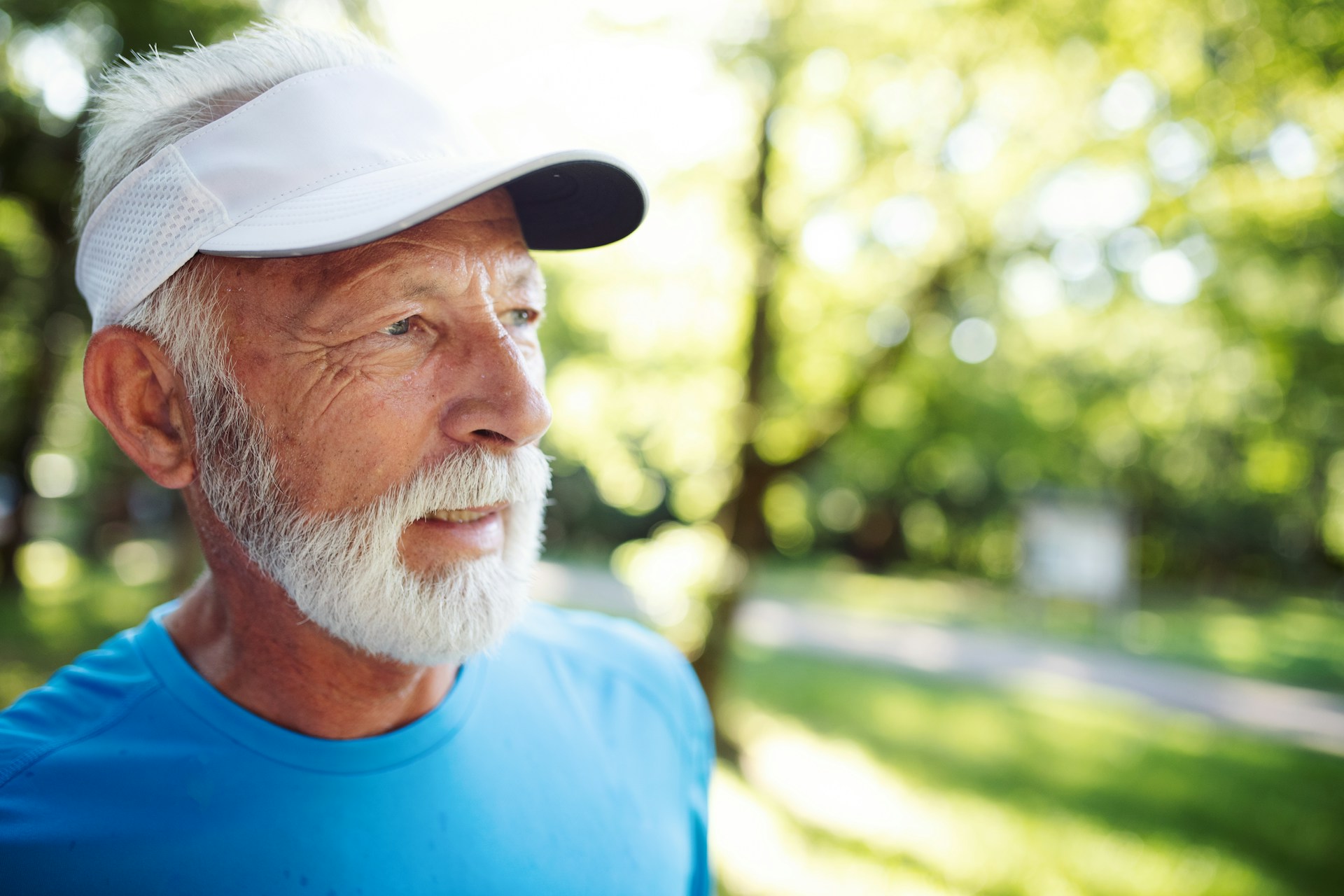Movement
Avoid These Items for Safer Senior Jogging

As we age, it’s natural to want to dial down the intensity of our workouts. However, cardiovascular exercises like jogging, running, swimming, or cycling remain crucial for seniors. But if you’re over 65, it’s important to take extra precautions when you lace up your running shoes. One of these precautions is dressing appropriately for your workout. Your clothing choices can either enhance your performance or potentially cause harm. So, what should you avoid wearing on your next jog? Here are five clothing items to leave in your wardrobe.
First and foremost, pay attention to your footwear. Sean Klein, CPT, a certified personal trainer with over 15 years in the fitness industry and the founder of Programme App, emphasizes the importance of replacing unsuitable jogging shoes with proper athletic footwear that offers cushioning, support, and stability.
“Old or worn-out shoes mostly lack the necessary support and cushioning needed for proper foot alignment, which leads to discomfort and potential injuries such as shin splints, plantar fasciitis, and knee pain,” he cautions.
He further warns against choosing the wrong type of footwear, such as sandals, sneakers without arch support, and dress shoes, as they can lead to serious injury. These types of shoes don’t provide “proper grip and stability on different surfaces, making it harder to maintain balance and potentially leading to falls.”
While most people understand the importance of supportive sneakers for jogging, many overlook the significance of supportive socks. Klein advises wearing moisture-wicking socks with added arch support, specifically designed for athletic activities. These socks can help prevent blisters, chafing, and discomfort while jogging.
“I do not recommend wearing cotton socks that absorb moisture, leading to wet and uncomfortable feet,” he advises.
Cotton is a comfortable and versatile fabric, but it’s not the best choice for seniors when jogging. Seniors are more prone to skin irritation and have a harder time regulating sudden changes in body temperature.
“Seniors might opt for cotton for its natural feel, but it’s not ideal for exercise as it absorbs and retains moisture, leading to discomfort and potential chafing,” says Chris Pruitt, CPT, a certified personal trainer and the CEO of Workout Healthy. Instead, he recommends moisture-wicking fabrics to keep the skin dry and comfortable during physical activity.
The size and cut of your clothing can also impact your run.
“Baggy pants may be chosen for ease and comfort, but they present a tripping hazard,” Pruitt warns. He suggests choosing close-fitting, stretchable pants or shorts for safety, as they allow for free movement without the risk of catching on objects.
Klein agrees, advising against loose-fitting clothes that could get caught on obstacles or cause chafing during jogging. He recommends well-fitting, moisture-wicking, breathable fabrics that provide comfort and mobility while preventing discomfort or irritation.
Lastly, while jewelry might be part of your daily routine or hold sentimental value, Pruitt advises against wearing it while jogging.
“During jogging, large or dangling pieces can become entangled with clothing or exercise equipment, posing a risk of injury,” he explains.
Before starting your jog, he recommends removing jewelry, watches, and other accessories to “prevent distractions and accidents, ensuring a safer workout experience.”
Let us know what you think, please share your thoughts in the comments below.
